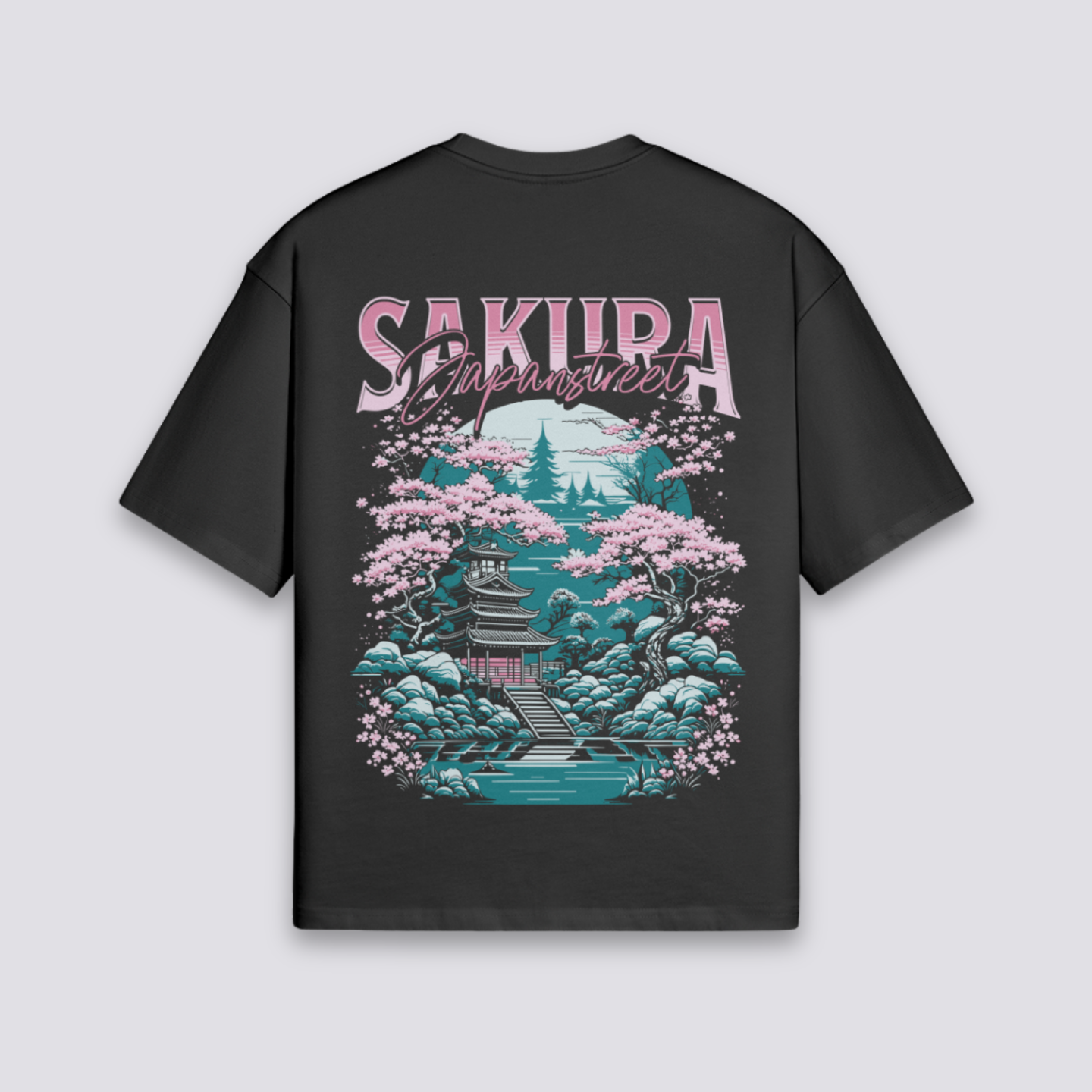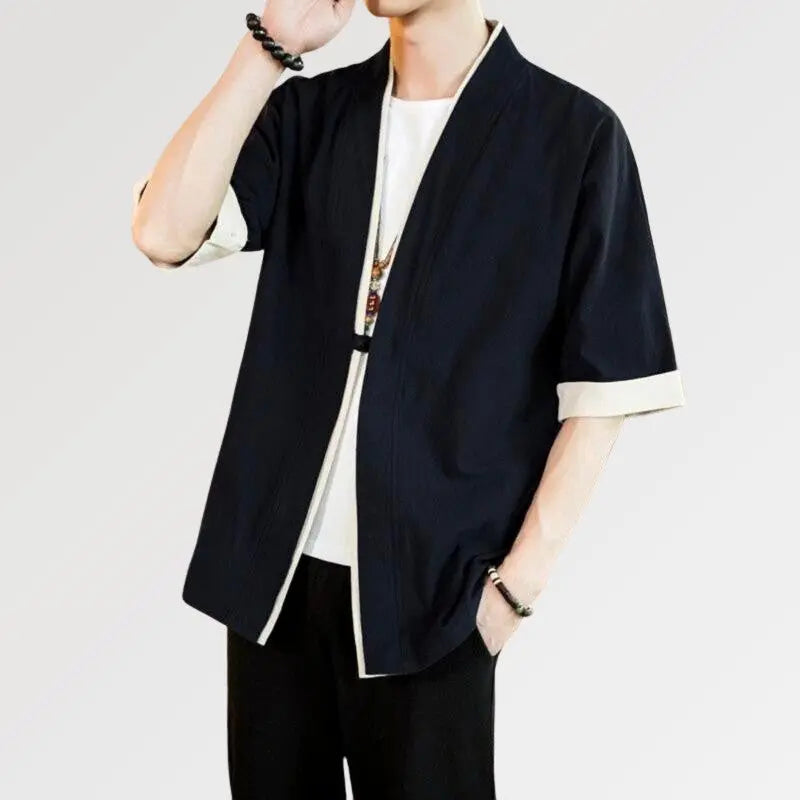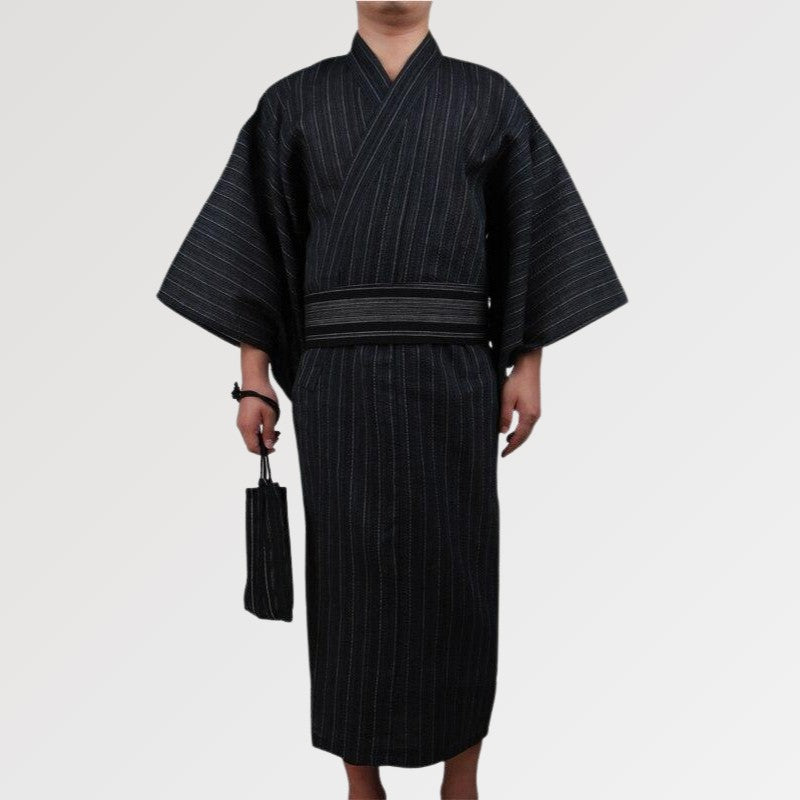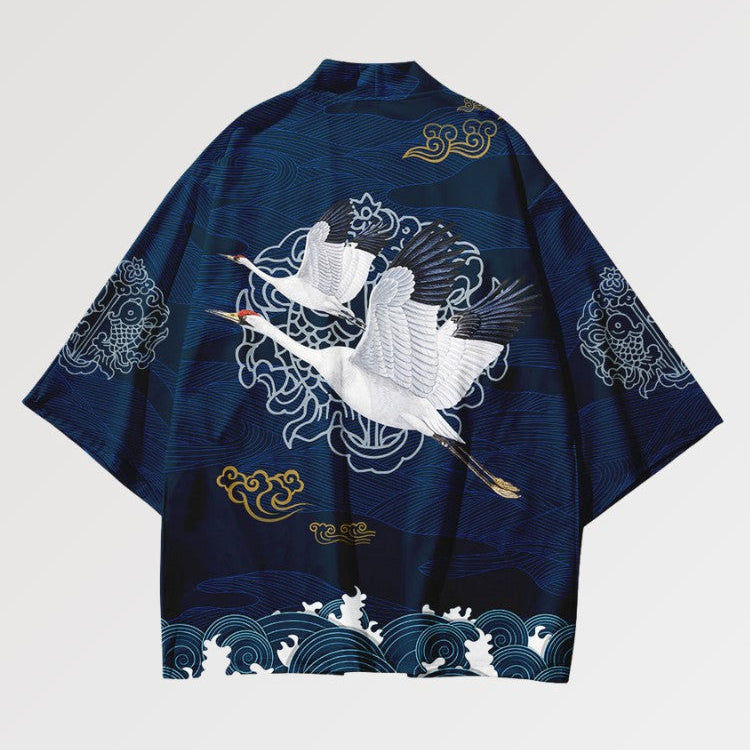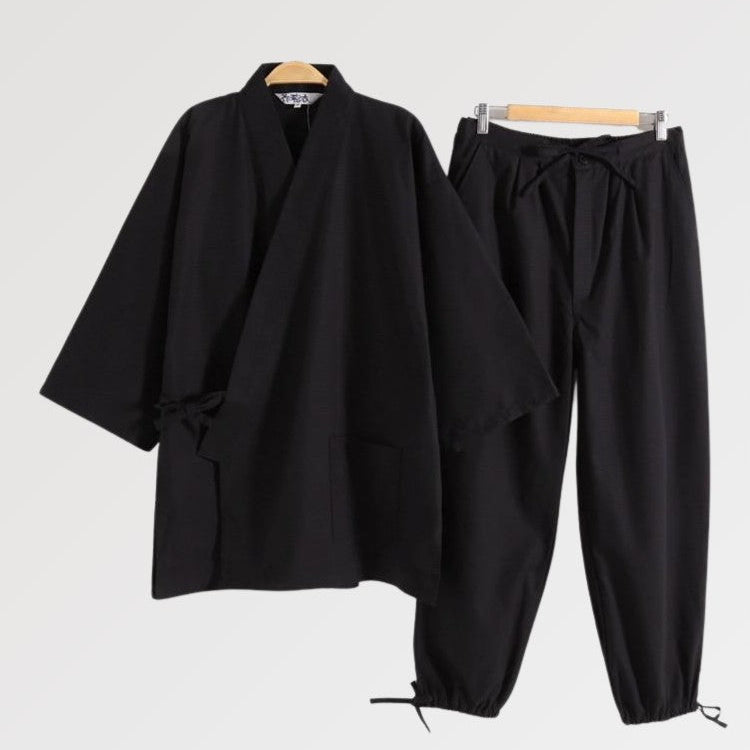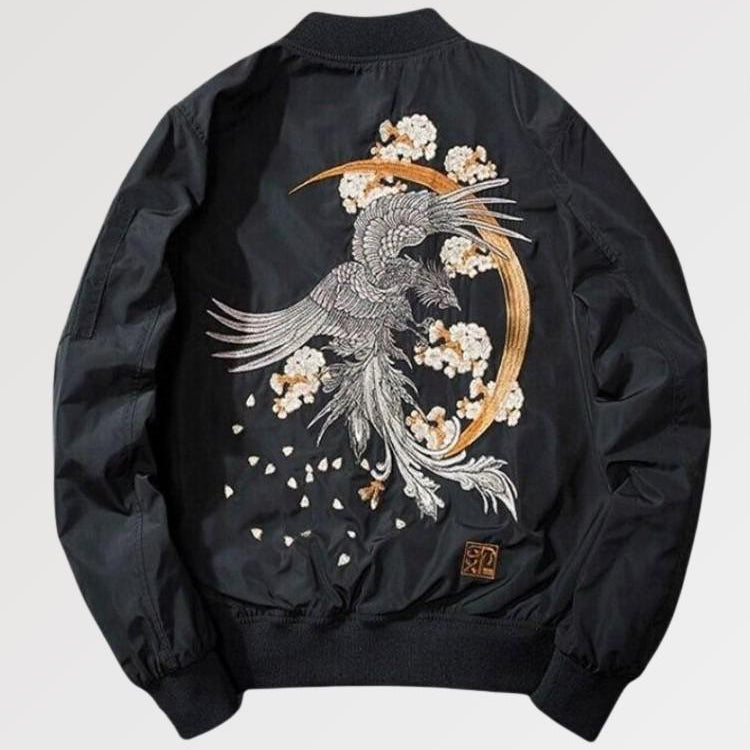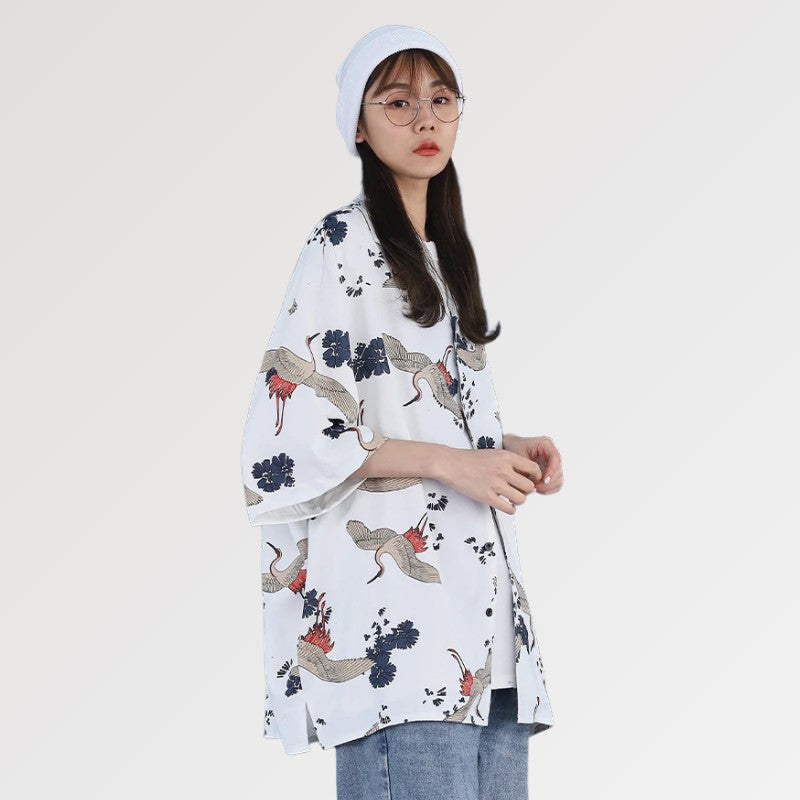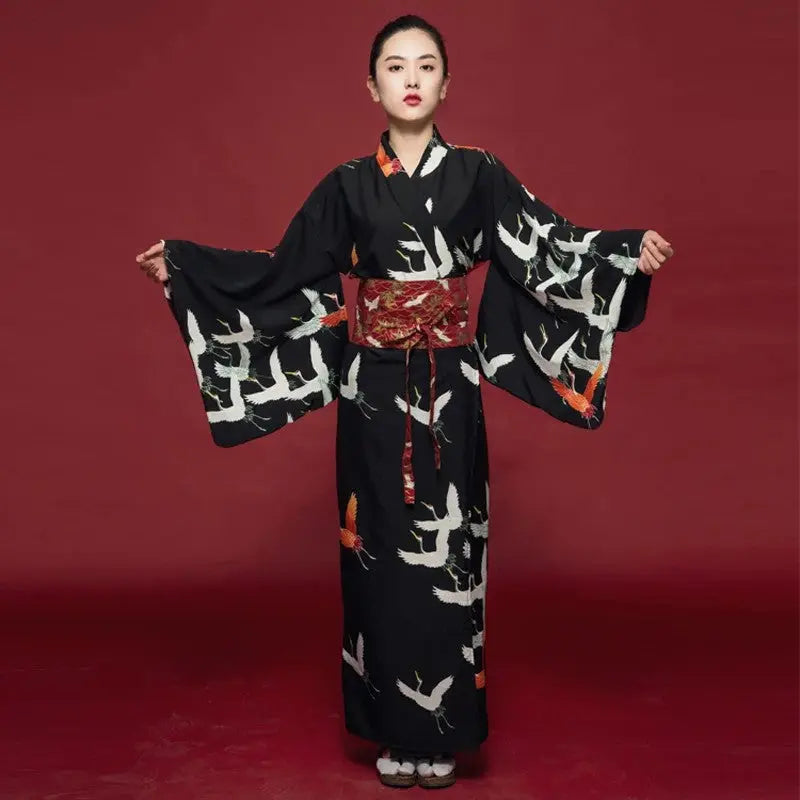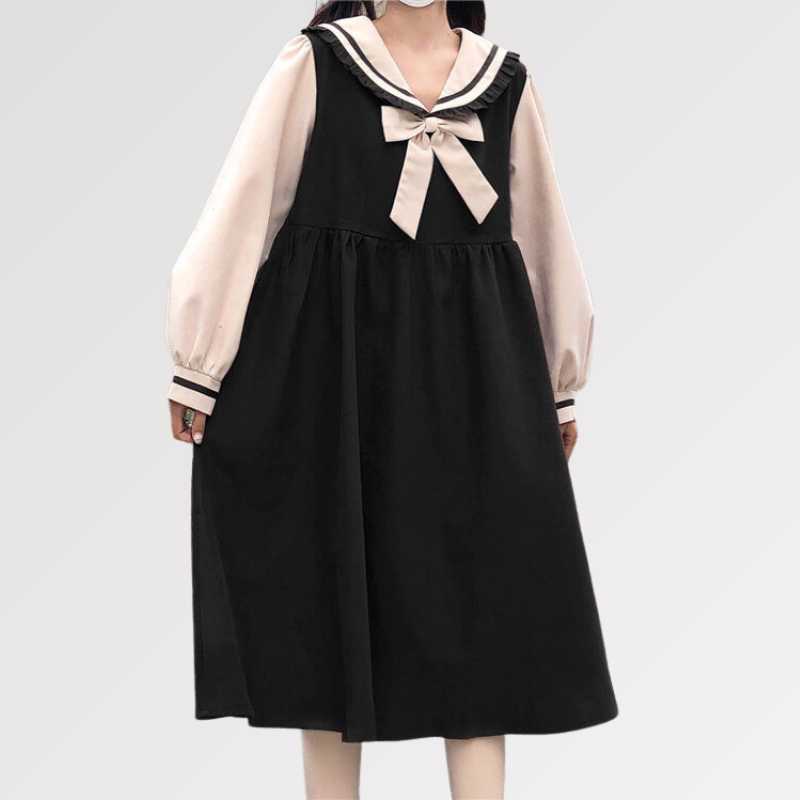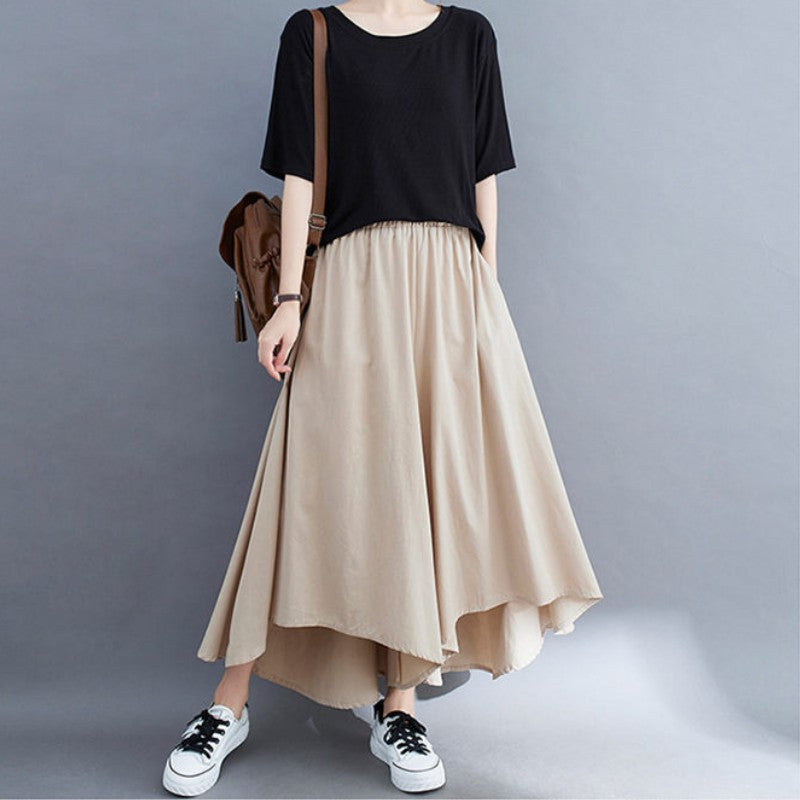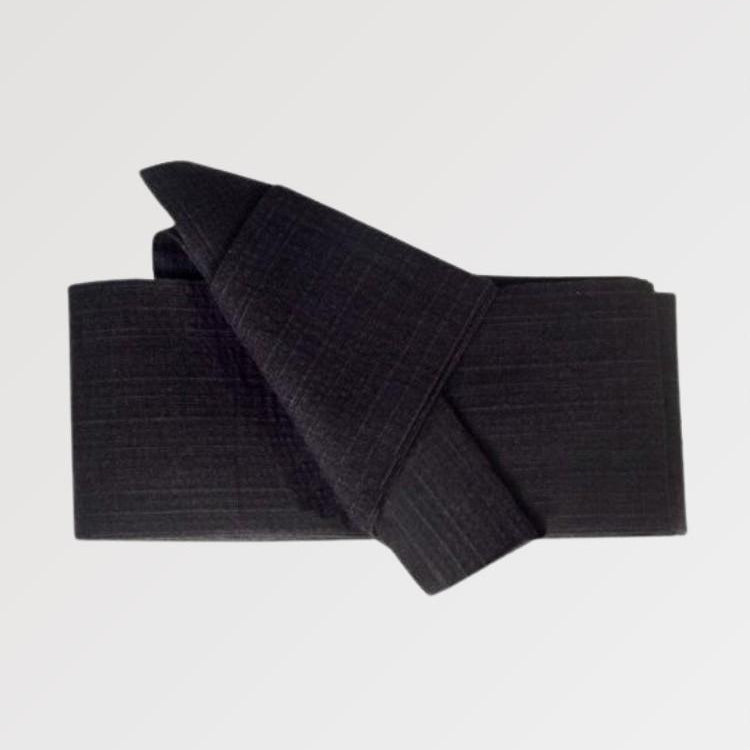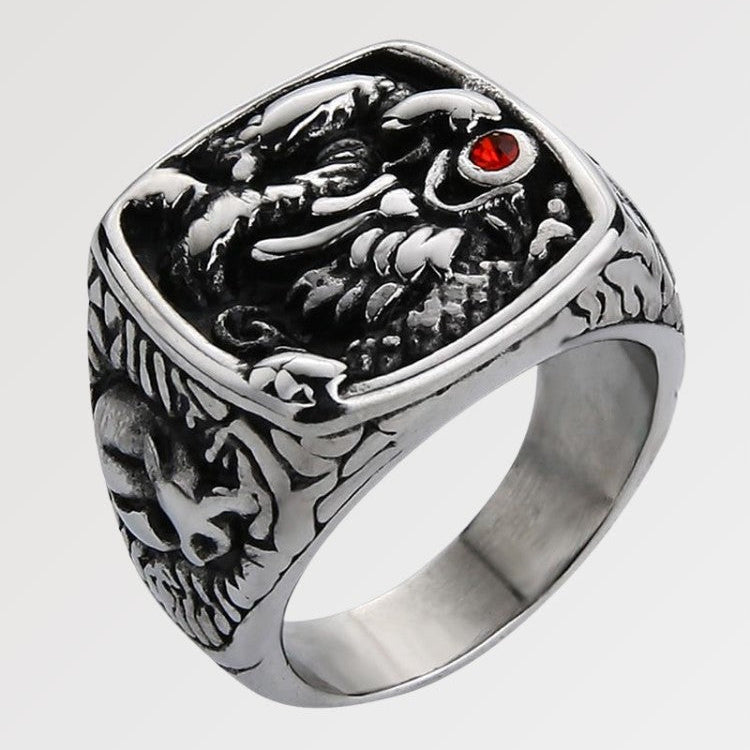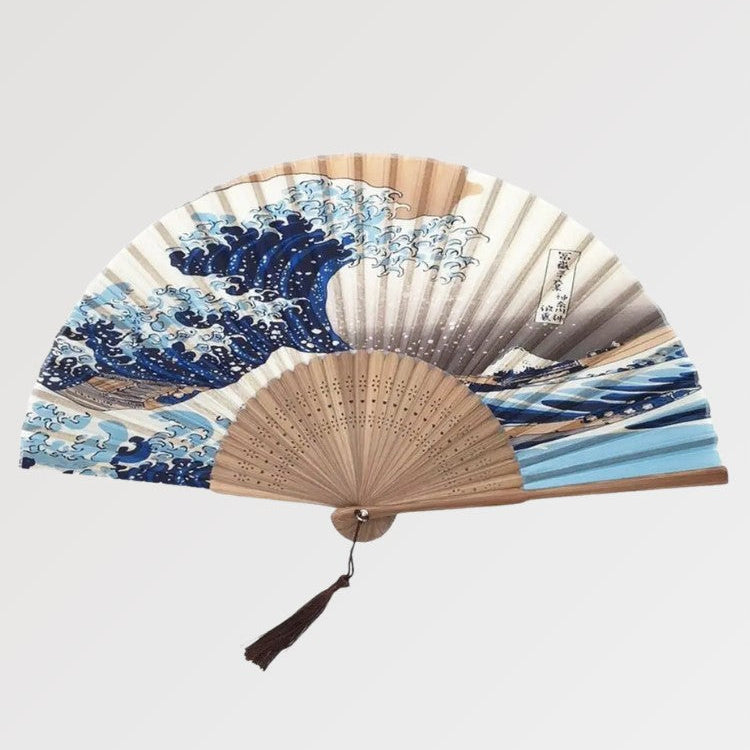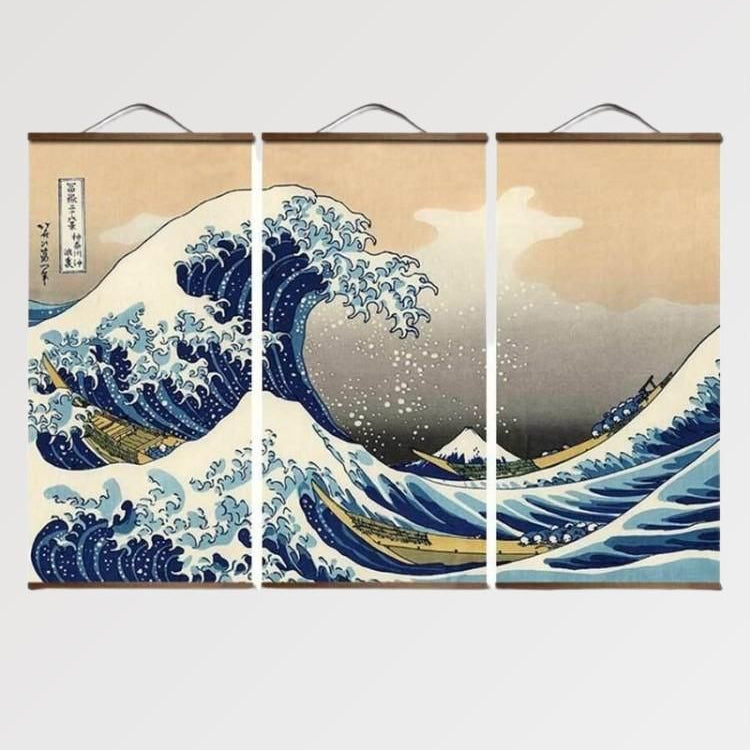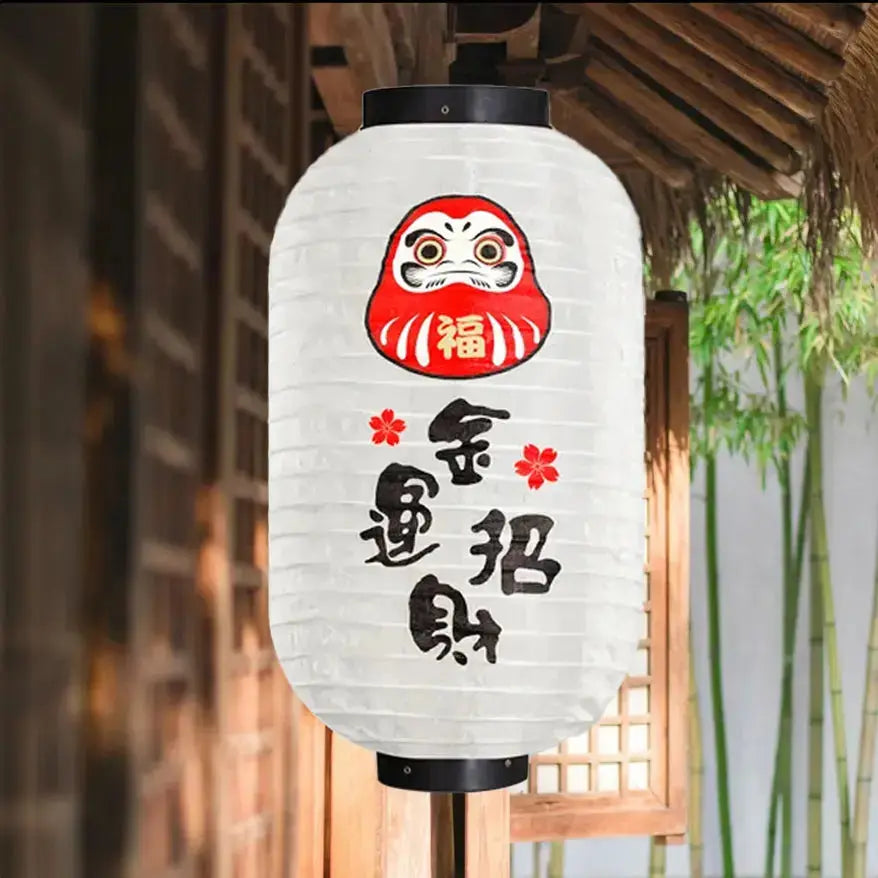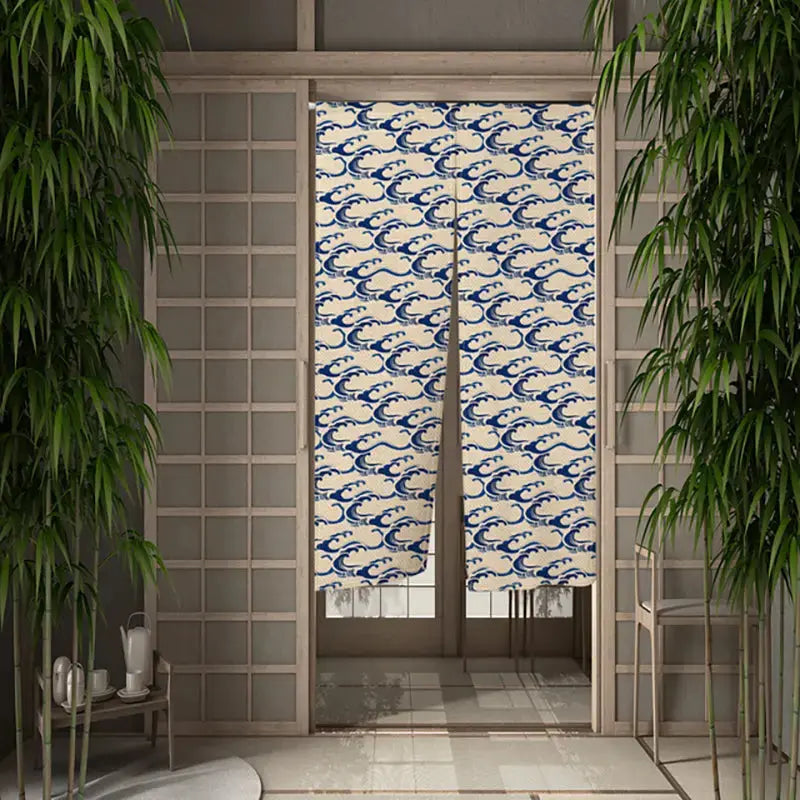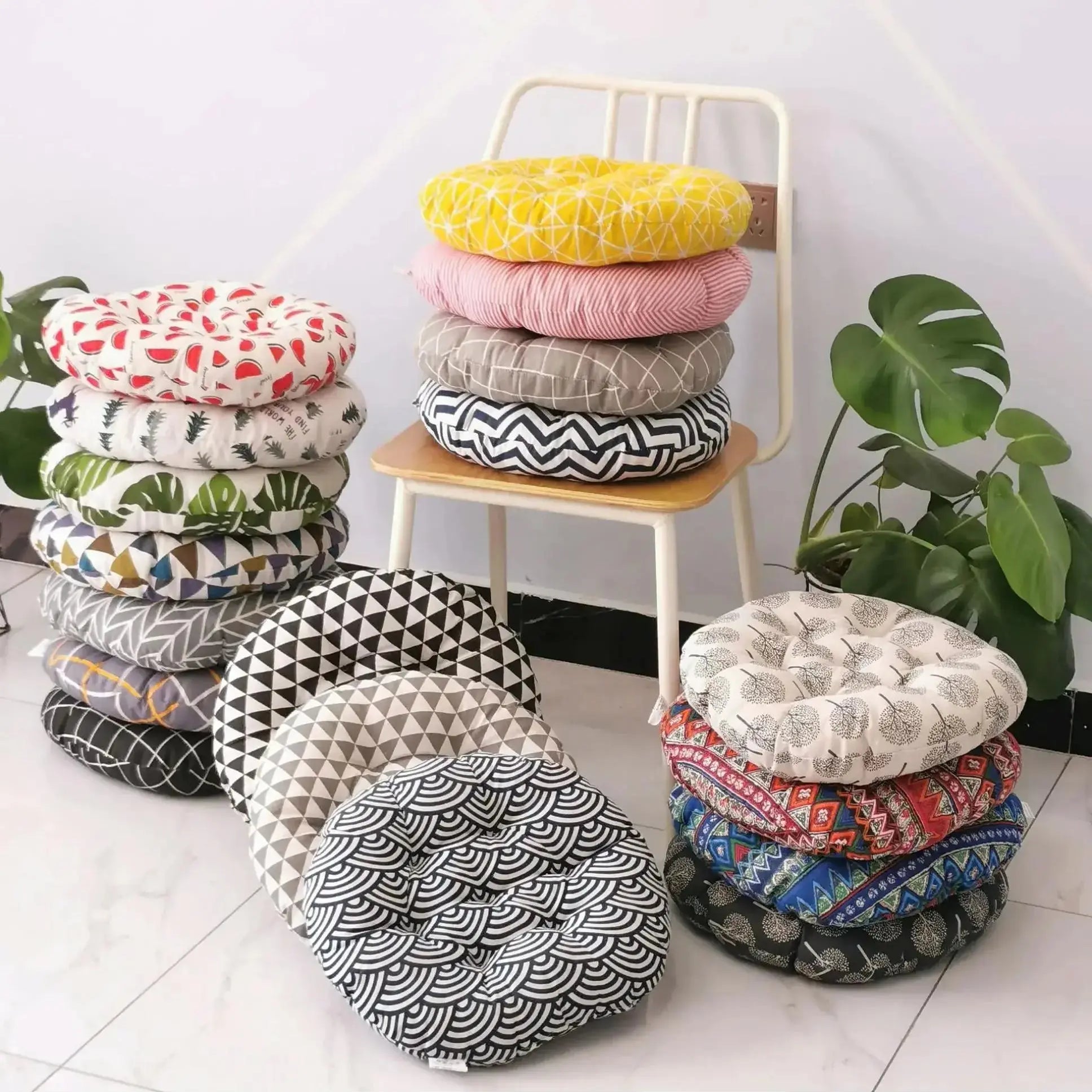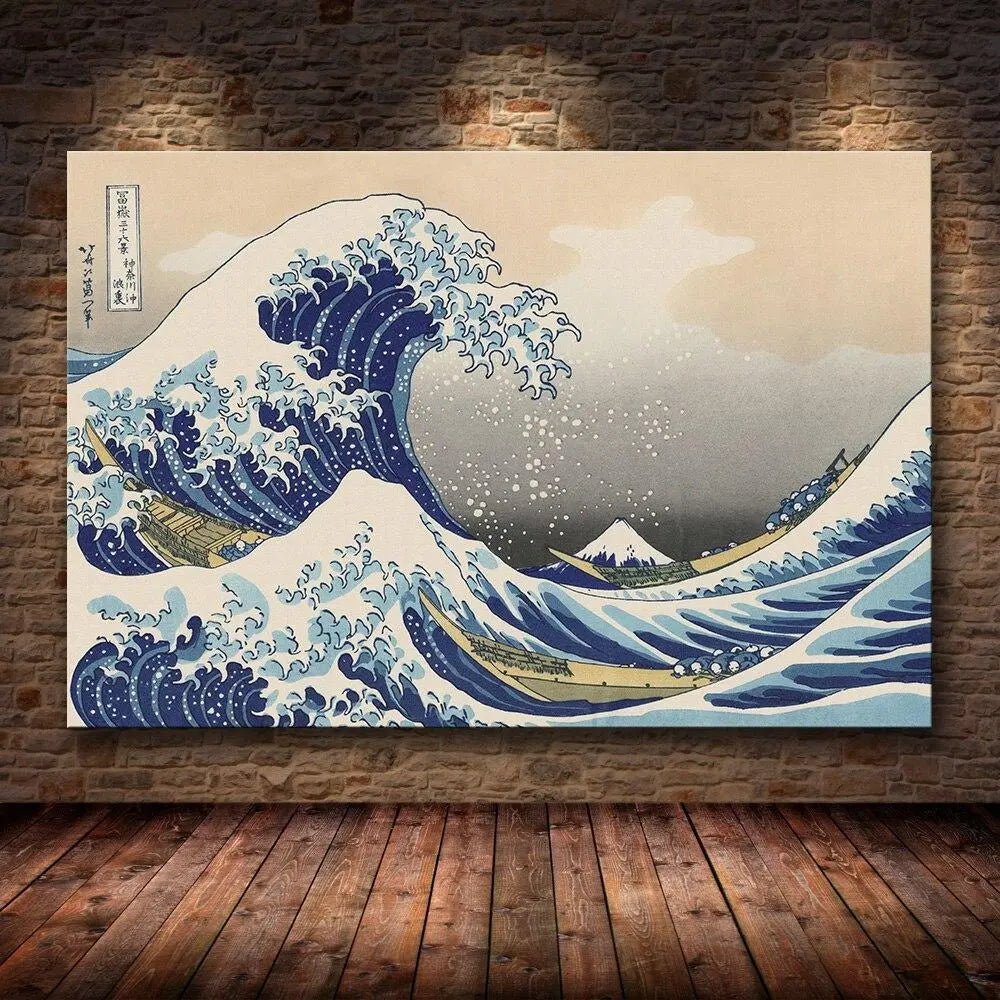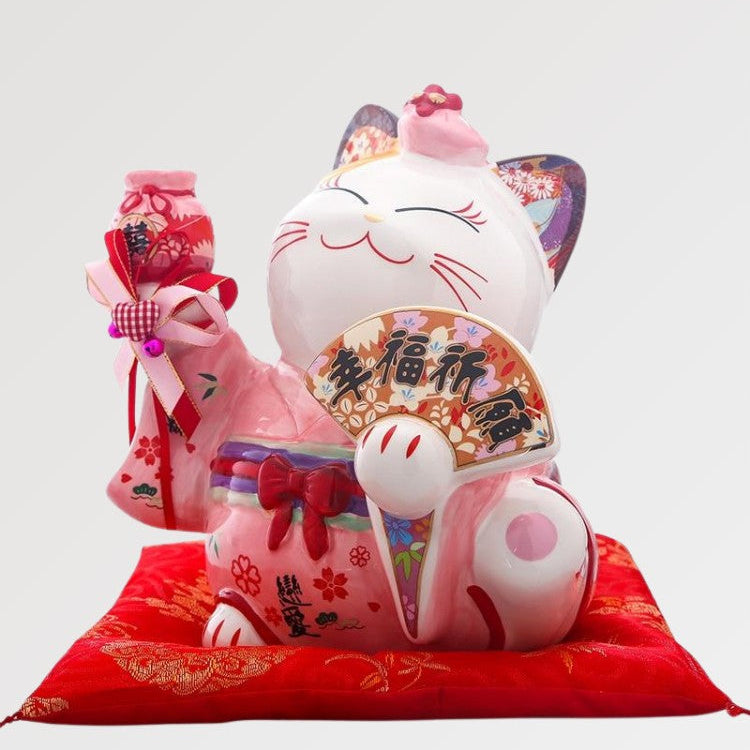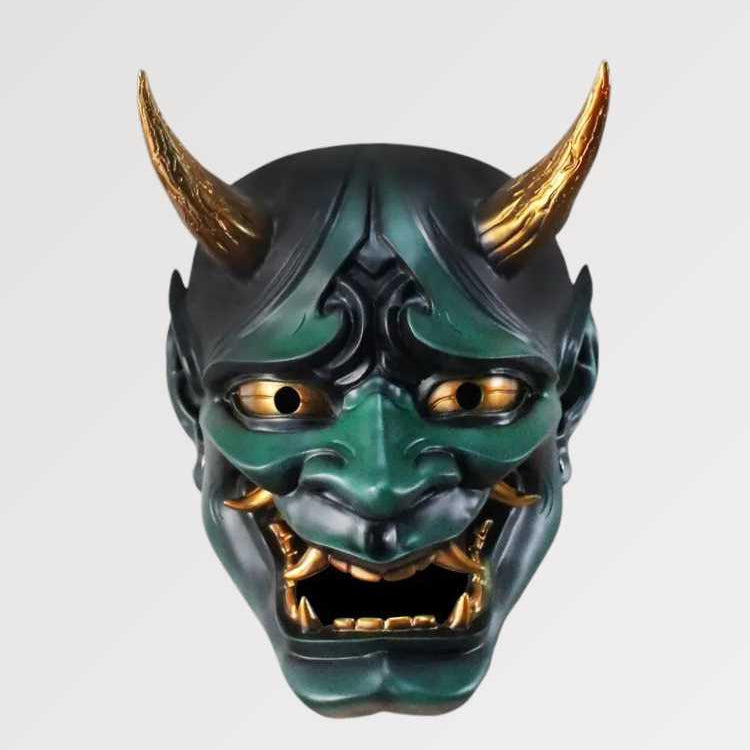A woman walks slowly through a garden in Kyoto, her kimono brushing against the
mossy stones. The fabric ripples with each step, as if the silk were breathing in
time with the wind.
Nothing is left to chance: the color of her belt matches that of the maple trees,
the inner lining evokes the season, and even the way the collar crosses
at the nape of her neck reveals her age and status.
The kimono—literally “thing worn” (着物, kimono)—is much more than
a traditional garment. For centuries, it has expressed the hierarchies,
values, and aesthetic sensibilities of a society deeply attached to
harmony. It said who you were, where you came from, and almost which season you
belonged to.
The kimono, from everyday wear to symbolic garment
The origins of the kimono date back to the time when Japan opened up to China
and admired its cultural power. In the 6th century, during the Asuka and
Nara periods, Japanese embassies sent to the Tang court brought back much
more than Buddhist books and doctrines: they also brought back an art of
dressing.
Long Chinese silk tunics with loose sleeves and codified colors
became a model for the Japanese elite.
But Japan never copies without transforming. Gradually, the cuts became lighter,
the seams simpler, and the fabrics adapted to the archipelago's more humid climate.
Clothes now closed crossed over the chest—a detail that
would become emblematic of the kimono—and the kosode (小袖), or
“small sleeve,” appeared, the ancestor of the modern kimono: shorter, more practical, worn
at court as undergarments.
During the Heian period (794–1185), Japan entered an age of absolute elegance.
The imperial court elevated clothing to an art form. Noble ladies wore the sumptuous jūnihitoe (十二単), consisting of twelve layers of silk whose
colors, skillfully layered, reflected the seasons and emotions.
This refinement had a name: kasane no irome (重ねの色目), “layered color harmonies.”
At court, taste was valued more than wealth, as was the accuracy of color coordination and the delicacy of combinations. The kimono became a language of refinement,
a mirror of aristocratic sensibility and restraint.
With the rise of the samurai in the Kamakura period (1185–1333), fashion became
With the rise of the samurai in the Kamakura period (1185–1333), fashion became
more sober. Warriors, focused on discipline and loyalty, favored simplicity
and functionality.
Under the Ashikaga and then the Tokugawa shoguns, the kimono took root in all
social classes and became everyday Japanese clothing.
By the end of the Edo period, the kimono had established itself as the garment that defined the
Japanese people's identity. Whether worn by samurai in dark silk, geisha in
delicate patterns, or merchants in indigo cotton, it became the common thread of a
shared culture, where clothing was no longer just adornment, but a sign of
belonging.
The kimono as a reflection of hierarchical society
In traditional Japan, the kimono is much more than just a garment: it is a
language. The shape of the sleeves, the length of the collar, the richness of the fabric, the choice
of patterns—everything has meaning, everything conveys a place in the world.
For women, the long sleeves of the furisode (振袖) signify youth and
freedom; once married, women adopt the more sober tomesode (留袖), a symbol of
restraint and stability. Men, on the other hand, favor neutral tones—gray, blue,
brown—with the haori (羽織) and hakama (袴) for ceremonies.
Even nature finds its way into the wardrobe: colors vary according to the
seasons—green and pink in spring, blue in summer, red in autumn, white in
winter. The kimono thus becomes a calendar, a reminder of the harmony between man
and the world.
But beyond aesthetics, the kimono is a social marker. In a
society shaped by Confucianism, clothing expresses order and hierarchy.
At court, the nobility displays refined silks and patterns; the samurai, on the other hand,
choose sobriety as a reflection of their righteousness.
In Edo, wealthy merchants circumvented the law by hiding the richness of their
fabrics inside the linings—concealed elegance, a symbol of wabi-sabi (侘寂), that discreet beauty that prefers depth to brilliance.
Even artisans and peasants wore a codified kimono: indigo cotton,
durable fabrics, patterns related to their trade—waves for fishermen, flax (asa)
for weavers, symbols of prosperity for merchants. Thus,
clothing did not divide: it connected each individual to their function, their
community, and the collective order.
Under the Tokugawa, the kimono even became a political instrument. Dress codes
were not only intended to control appearance, but also to preserve
public morality. Wearing clothing that was too rich for one's rank was seen as disrupting
the social balance, almost an act of rebellion. Confucianism permeated
fashion at the time: beauty lay in moderation, modesty, and appropriateness.
And this idea endures. Contemporary Japanese fashion, while exploring
the avant-garde, remains faithful to this tradition of hidden detail, nuance, and
restraint—a legacy of a time when clothing reflected morality as much as
style.
A garment imbued with symbolism: spirituality, aesthetics, and identity
The kimono is not just made to be seen—it is meant to be lived. Its straight,
unrestricted cut forces you to slow down: your steps become measured, your movements
softer, more conscious. This restraint is not mere politeness; it expresses a
philosophy of calm, moderation, and living in the moment.
Its crossover at the chest—always left over right, the reverse being
reserved for the dead—embodies order and the continuity of the vital breath (ki 気).
Wearing a kimono means attuning one's body to the season and the surrounding nature.
Colors do not follow mood, but the world: one dresses
in harmony with the wind, the light, the blossoms.
This sensitivity is echoed in the concept of ma (間), "the space between
things." In the way the fabric floats or suspends movement, there is a void
full of meaning that embodies Japanese grace. The kimono does not merely dress the
body—it attunes the spirit to the breath of the world.
Each kimono is also a story. Its patterns—flowers, animals, landscapes—
speak a symbolic language. The crane (tsuru 鶴) evokes longevity, the turtle (kame 亀) wisdom, the cherry tree (sakura 桜) fleeting beauty, the chrysanthemum
(kiku 菊) nobility, bamboo (take 竹) uprightness. Stylized waves
(seigaiha 青海波) suggest peace, clouds (kumo 雲) elevation, and hexagonal kikkō(亀甲) patterns
recall turtle shells, a symbol of protection. As for the kamon (家紋), the family crest embroidered on the back or sleeves, it seals
belonging to a lineage—a thread of honor and memory.
In Japanese society, each stage of life has its own kimono. Newborns
are wrapped in auspicious silk, young girls at seijin-shiki (coming-of-age ceremonies) wear
bright furisode, and brides in white (shiromuku 白無垢) embody purity before
donnning the red of prosperity.
Even death has its garment: the reverse crossover (right over left) marks
the passage to the afterlife.
For samurai, the kimono is a second skin: under the armor, it
symbolizes self-control. The straight fit, the smooth silk, the absence of ostentation are
as much signs of elegance as they are of inner discipline.
In Noh theater and Kabuki, it becomes a theatrical language. Colors and
cuts define roles: red for passion, white for the supernatural,
black for nobility or death. Each costume encapsulates centuries of
symbolism, where fabric, more than words, conveys the Japanese soul.
From everyday life to memory: the transmission of kimono in Japanese society
In traditional Japanese society, the kimono is not just a precious garment—it is a link between generations.
Kept in cedar chests (tansu 箪笥), protected from humidity and insects, it is carefully taken out on special occasions.
It is ironed by hand and folded with precise, almost ritualistic movements.
They are ironed by hand and folded according to precise, almost ritualistic movements. From
mother to daughter, they are passed down as part of the family soul: a furisode worn in
youth becomes, after marriage, a sober tomesode — the same fabric, but representing a different stage
of life.
This attention reveals a typically Japanese vision: objects have a
soul. According to the belief in tsukumogami (付喪神), any ancient object that is loved and
respected eventually comes to life with a spirit. Preserving a kimono is therefore honoring
a presence, connecting the past to the present, the ancient hand to the one who wears it
today.
Behind each piece lies a world of artisans. Weavers (orimonoshi
織物師), dyers (someya 染屋), embroiderers (nuimonoshi 縫物師) and tailors
work together with precision inherited from centuries past. Yuzen (友禅染) paints
landscapes on silk, shibori (絞り) ties the fabric before dyeing to create
reliefs, and katazome (型染め) uses stencils to print airy patterns.
These skills, long considered domestic, are in fact
major arts, based on patience, rigor, and sensitivity—three virtues
that Japan elevates to the rank of wisdom. Thus, each kimono becomes a book of
textures: each thread, each nuance bears witness to a hand, a gaze, a
breath.
In a culture where beauty lies as much in the gesture as in the result, the
kimono embodies the perfect union of art and life.
With the Meiji era, the opening up to the West disrupted the codes. European clothing
became the norm in the public sphere, while the kimono became a
symbol of tradition and femininity.
But far from disappearing, it reinvented itself as a cultural and national emblem. In the
20th century, geishas, tea masters, and Noh and Kabuki actors perpetuated its
use in the arts. At weddings, festivals, and ceremonies, it remains a
language of respect and harmony—a way of saying, "We have not
forgotten who we are."
And even today, in the heart of modern Japan, the kimono lives on. In Kyoto, it is worn to visit temples or celebrate the cherry blossoms. In Tokyo, designers fuse ancient fabrics with contemporary textiles, turning the kimono into a garment of urban art. Beneath its folds, it preserves the memory of a people capable of transforming themselves without ever denying their soul.
